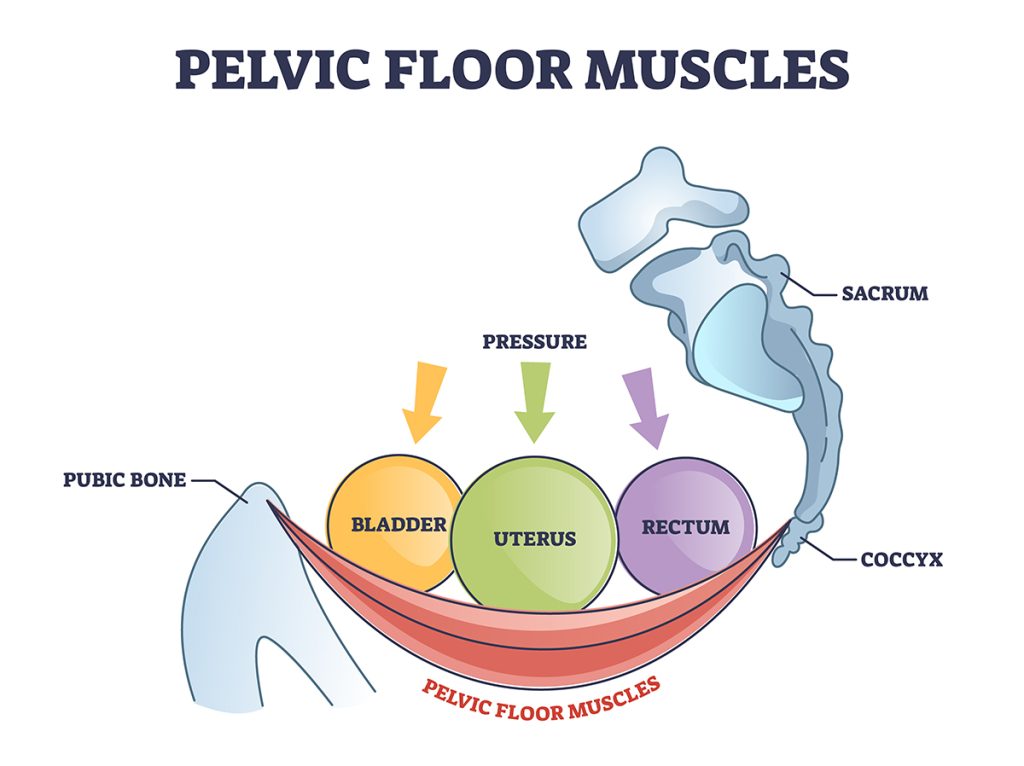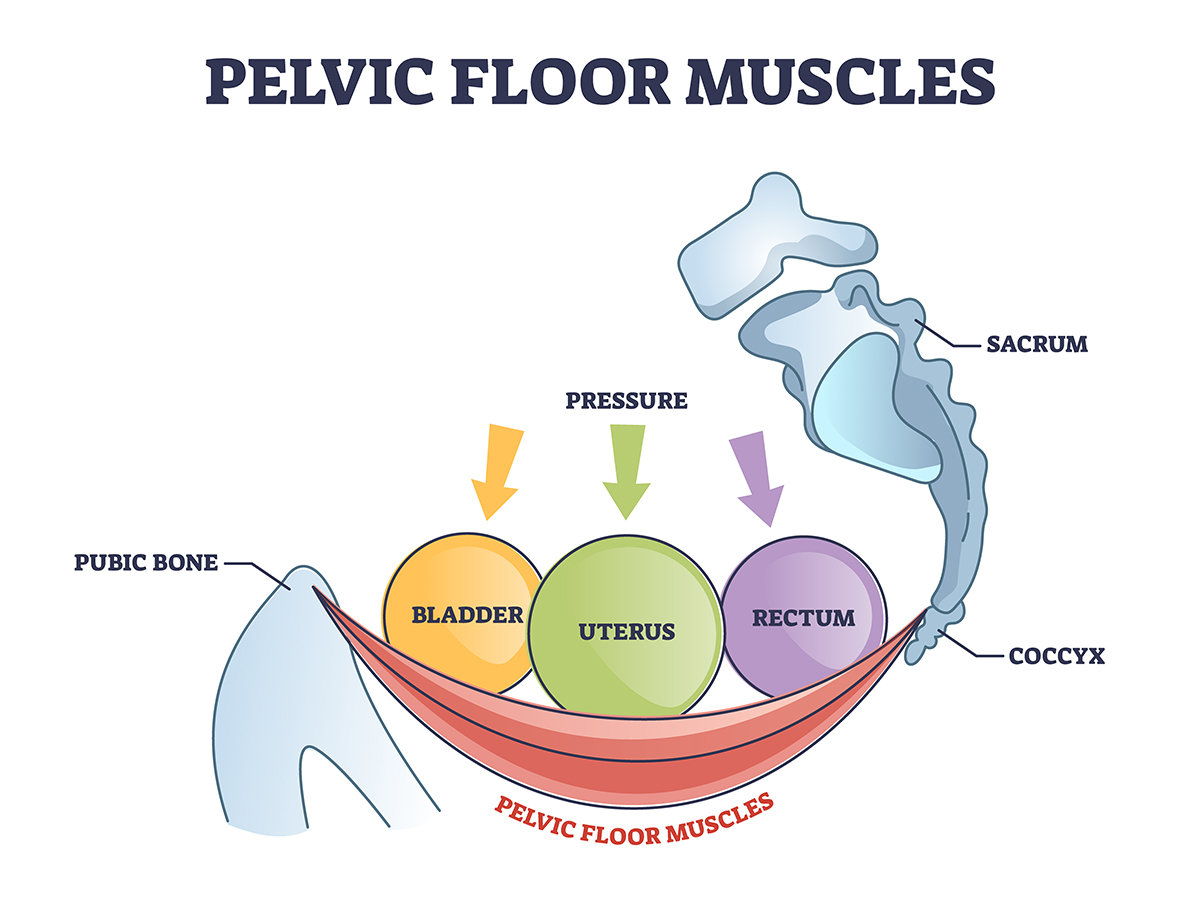Pelvic Floor: Lower Region Muscles with Big Responsibilities
The area of the body referred to as your pelvic floor are the muscles that are used to urinate, pass bowel movements, and for sexual intercourse. When or if these muscles weaken, there can be uncomfortable and inconvenient interferences for someone’s day to day living. The side effects of having a weak pelvic floor are negative, so taking preventative measures can be important and incorporating exercises to strengthen these muscles is necessary. We need to be in control of squeezing and relaxing these muscles, although most of the time this is done automatically.

Your pelvic floor muscles are your core. These include your abdominal muscles, back muscles, and your diaphragm. They wrap around the pelvic bone to tailbone and then extend on both sides of the pelvis. If you want to feel where these muscles are you can squeeze the urethra to stop yourself from peeing or squeeze your anus to stop yourself from passing gas. There are two main muscles of the pelvic floor which are the levator ani (which has three parts) that wraps around the entire pelvic and the coccygeus which is located near the back of the pelvis.
There are a few reasons the pelvic floor can weaken over time. Childbirth, trauma, and surgery are the most common culprits. These muscles are stressed during pregnancy. Hormonal changes in women as they age, particularly during menopause, can weaken the muscles. Persons with diabetes are also at higher risk for weaker pelvic floor muscles. Certain conditions can also weaken them. These would include stress incontinence, urge incontinence, anal incontinence, fecal incontinence, and what is called pelvic organ prolapse. Stress incontinence happens to many women post childbirth and for men post prostate surgery. This is when you might dribble pee when you sneeze, cough, laugh, and/or lift something. Urge incontinence is the constant feeling of needing to pee. Anal incontinence is having a hard time controlling when you pass gas, and fecal incontinence is having a hard time controlling bowel movements. Pelvic organ prolapse is when the muscles including the uterus, bladder, and rectum might bulge into the vagina and cause a protrusion.
Treatment depends on the severity of the condition. There are natural approaches to do this, but surgery could be required. Kegel exercises would be the first measure. Kegels are an effective exercise which involves squeezing and relaxing the pelvic floor muscles, focusing on controlling the sensation. Squeezing time can start with 3 seconds and increase to 8 to 12 seconds over time. Exercises shouldn’t be done if there has been trauma or injury to the area unless cleared by a medical professional. There are trained physical therapists to guide and assist with pelvic floor exercises as well. Avoiding constipation if possible is also helpful. This could include lifestyle changes revolving around diet, activity, and medications.
Most people don’t even think about their pelvic floor muscles until a problem arises. Natural aging brings about new areas of the body we become aware of and took for granted at younger ages. As with all areas of our health, being proactive rather than reactive is desired. It’s important to address health issues even if the topic is embarrassing or private. Helping ourselves helps others and there are natural measures we can take without extreme invasive procedures.
Originally printed on Every BODY’s Fit blog. Reprinted with permission.
Dr. Megan Johnson McCullough, owner of Every BODY’s Fit in Oceanside CA, is a NASM Master Trainer, AFAA group exercise instructor, and specializes in Fitness Nutrition, Weight Management, Senior Fitness, Corrective Exercise, and Drug and Alcohol Recovery. She’s also a Wellness Coach, holds an M.A. Physical Education & Health and a Ph.D in Health and Human Performance. She is a professional natural bodybuilder, fitness model, and published author.
References:
Pelvic floor muscle exercise and training for coping with urinary incontinence – PMC (nih.gov)

